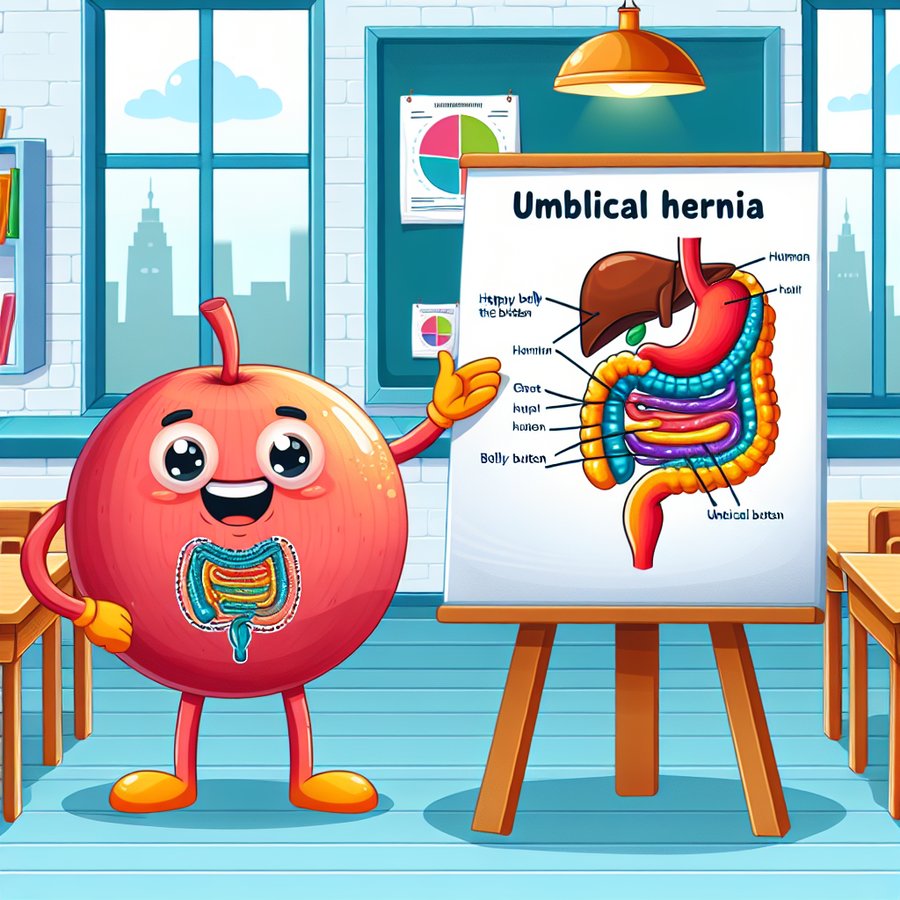One common concern that may catch the attention of new parents is an umbilical hernia, a condition quite prevalent among infants. This guide aims to demystify umbilical hernia by providing you with thorough information on what it is, its symptoms, causes, treatment options, and when to consult a healthcare provider. Understanding this condition can alleviate worries and prepare you for managing it effectively.
What is an Umbilical Hernia?
An umbilical hernia occurs when part of the intestine protrudes through an opening in the abdominal muscles near the navel. It is particularly common in infants and is usually noticeable when the baby cries, coughs, or strains, causing the belly button to bulge outward. Most umbilical hernias in infants are harmless and typically resolve on their own by the time the child reaches 3 to 4 years of age.
For an in-depth understanding, you might want to read up more on umbilical hernias through reputable sources such as the Mayo Clinic. This link will provide you with credible information complementing what you are learning here.
How to Identify Symptoms of an Umbilical Hernia
Identifying an umbilical hernia is crucial for early intervention. The most apparent sign is a bulge or swelling at the navel, which becomes more prominent when the baby is crying or straining. Other than the visible bulge, there are usually no other symptoms. However, if your baby exhibits signs of discomfort, abdominal pain, or vomiting, it is essential to consult a healthcare provider as these may be indications of a complication.
Monitoring your baby’s health and development is vital. For related concerns, you might find resources on bowel movements and crying useful, as they can offer insights into managing and understanding your baby’s behavior and health in relation to an umbilical hernia.
Causes of Umbilical Hernia in Infants
The primary cause of an umbilical hernia is an incomplete closure of the abdominal muscles where the umbilical cord passes through. This condition is more common in premature babies and those with low birth weight. Factors such as a family history of hernias, being part of multiple births (twins, triplets, etc.), and certain medical conditions like Down syndrome may also increase the risk.
Understanding the causes can help in assessing the risk and managing the condition more effectively. For more information on related topics, consider exploring prematurity and Down syndrome on our website.
Treatment Options for Umbilical Hernia
Most umbilical hernias in infants close on their own by the time the child is 3 to 4 years old, and they rarely require any treatment. However, if the hernia persists beyond this age, is larger than two centimeters, or causes pain and discomfort, surgical intervention may be necessary. The surgery is a simple procedure where the hernia is pushed back into the abdomen, and the abdominal wall is repaired.
It’s crucial for parents to follow their pediatrician’s advice regarding the management and potential treatment of an umbilical hernia. Regular check-ups will ensure that any changes in the hernia’s size or symptoms are monitored closely. For parents looking for more information on surgical procedures and post-operative care, visiting umbilical hernia on our site may provide valuable insights.
When to See a Doctor
If you notice any changes in the size of the hernia, or if your baby shows signs of pain, such as excessive crying, discomfort during bowel movements, or vomiting, it is important to see a healthcare provider immediately. These could be signs of a strangulated hernia, where the blood supply to the protruded intestine is cut off, requiring emergency medical attention.
Additionally, if the hernia does not close on its own by the time your child is of school age, or if it continues to grow or becomes painful, consulting a pediatric surgeon for an assessment and possible treatment is advisable.
By understanding what an umbilical hernia is, recognizing the signs and symptoms, knowing the causes, and exploring treatment options, parents can better manage this common condition in infants. Empowering yourself with knowledge not only helps in providing the best care for your baby but also in easing any concerns you may have about this condition.













